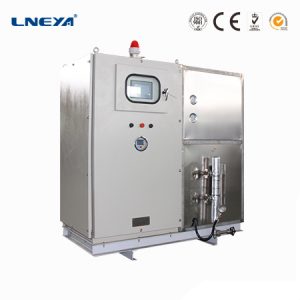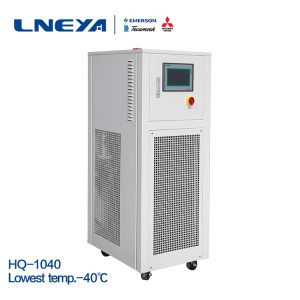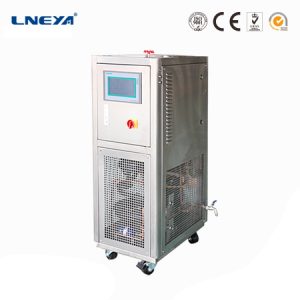What type of chiller is needed for low-temperature etching?
The low-temperature etching process usually requires extremely high precision temperature control and strong cooling ability to maintain stable operation of the etching equipment at extremely low temperatures, in order to achieve finer etching effects and optimize the performance of semiconductor devices.
For this requirement, the applicable types of coolers mainly include:
Multi channel chiller: A chiller with multiple independent temperature control circuits that can accurately control the temperature of different parts, ensuring uniform and stable temperature throughout the entire system. This is particularly important for complex etching equipment that requires maintaining different temperatures in different regions.
Low temperature chiller: This type of cooler is designed to generate and maintain extremely low temperatures, providing cooling capacity from ambient temperature to far below freezing point, suitable for low-temperature etching process requirements such as -70℃.
Closed loop refrigeration system: The closed loop system can more effectively control temperature and reduce energy consumption, suitable for etching processes that require long-term stable low-temperature operation, while reducing the impact on the external environment.
Semiconductor specific chillers: These chillers are customized to meet the needs of the semiconductor industry and have characteristics such as high-precision temperature control, fast response, low vibration, and low noise. Some are also designed with special material heat exchangers to cope with corrosive environments.
Handheld low-temperature chiller: Although not as widely used in production lines as large chillers, handheld low-temperature coolers may also be adopted in certain specific local low-temperature control or portable application scenarios due to their flexible and convenient advantages.
Therefore, the chiller used must not only achieve the required low temperature, but also be compatible and capable of handling cooling media under such special working conditions, while also having good corrosion resistance. When choosing a cooler, factors such as energy efficiency, ease of maintenance, level of intelligent control system, and ease of integration into existing production lines should also be considered.
Customization of chiller solutions
Related recommendations
-
Which Type of Chiller Can Be Chosen for Cooling XRD?
1042Which Type of Chiller for Cooling XRD?
View details -
Refrigeration effect of water-cooled chiller at -15℃
844The main configurations of water-cooledchillers are: compressors, electrical components, water pumps, evaporators,condensers, high/low pressure controllers, high/low pressure gauges, LCDthermostats, expansion valves, antifreeze switches, hand v...
View details -
Treatment of organic waste gas by condensation method
1244Condensation treatment of organic waste gas equipment should pay attention to its performance when selecting. It is very necessary to choose high-performance condensation method to treat organic waste gas. So what is the use of organic waste gas f...
View details -
Parameters of small gas condensing liquefaction system
1166During the process of loading and unloading gasoline and refueling vehicles, and collecting high-concentration gas from the chemical plant. One or two methods in the process of adsorption or condensation, or the conversion of oil and gas from a ga...
View details -
How to deal with the installation of the hot and cold integrated control machine?
1186Since the thermocouple's thermal inertia causes the meter's indicated value to lag behind the measured temperature, this effect is particularly pronounced when performing rapid measurements. Therefore, thermocouples with thinner thermal electrodes...
View details
 LNEYA Industrial Chillers Manufacturer Supplier
LNEYA Industrial Chillers Manufacturer Supplier
















